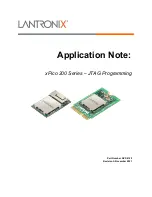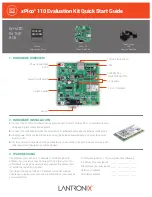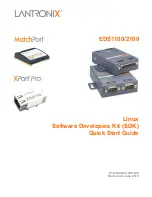Chapter 3 Memory Mapping Control (S12XMMCV4)
MC9S12XE-Family Reference Manual , Rev. 1.19
220
Freescale Semiconductor
in the memory map. This is to make sure that the correct PPAGE value will be present on stack at the time
of the RTC instruction execution.
3.5.2
Port Replacement Registers (PRRs)
Registers used for emulation purposes must be rebuilt by the in-circuit emulator hardware to achieve full
emulation of single chip mode operation. These registers are called port replacement registers (PRRs) (see
Table 1-25
). PRRs are accessible from CPU, BDM and XGATE using different access types (word
aligned, word-misaligned and byte).
Each access to PRRs will be extended to 2 bus cycles for write or read accesses independent of the
operating mode. In emulation modes all write operations result in simultaneous writing to the internal
registers (peripheral access) and to the emulated registers (external access) located in the PRU in the
emulator. All read operations are performed from external registers (external access) in emulation modes.
In all other modes the read operations are performed from the internal registers (peripheral access).
Due to internal visibility of CPU accesses the CPU will be halted during XGATE or BDM access to any
PRR. This rule applies also in normal modes to ensure that operation of the device is the same as in
emulation modes.
A summary of PRR accesses:
•
An aligned word access to a PRR will take 2 bus cycles.
•
A misaligned word access to a PRRs will take 4 cycles. If one of the two bytes accessed by the
misaligned word access is not a PRR, the access will take only 3 cycles.
•
A byte access to a PRR will take 2 cycles.
Because
of
an
order
from
the
United
States
International
Trade
Commission,
BGA-packaged
product
lines
and
part
numbers
indicated
here
currently
are
not
available
from
Freescale
for
import
or
sale
in
the
United
States
prior
to
September
2010:
S12XE
products
in
208
MAPBGA
packages


















